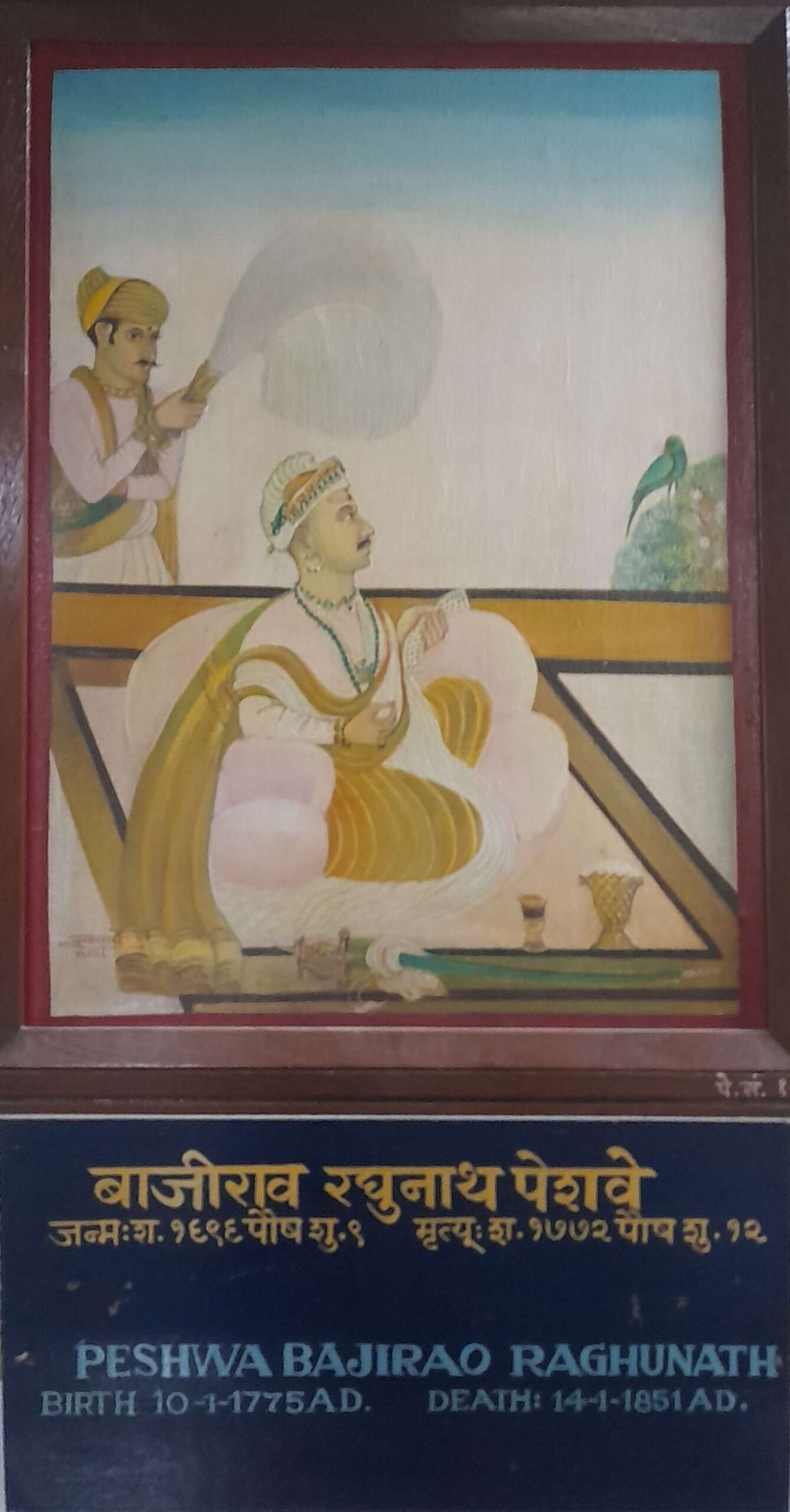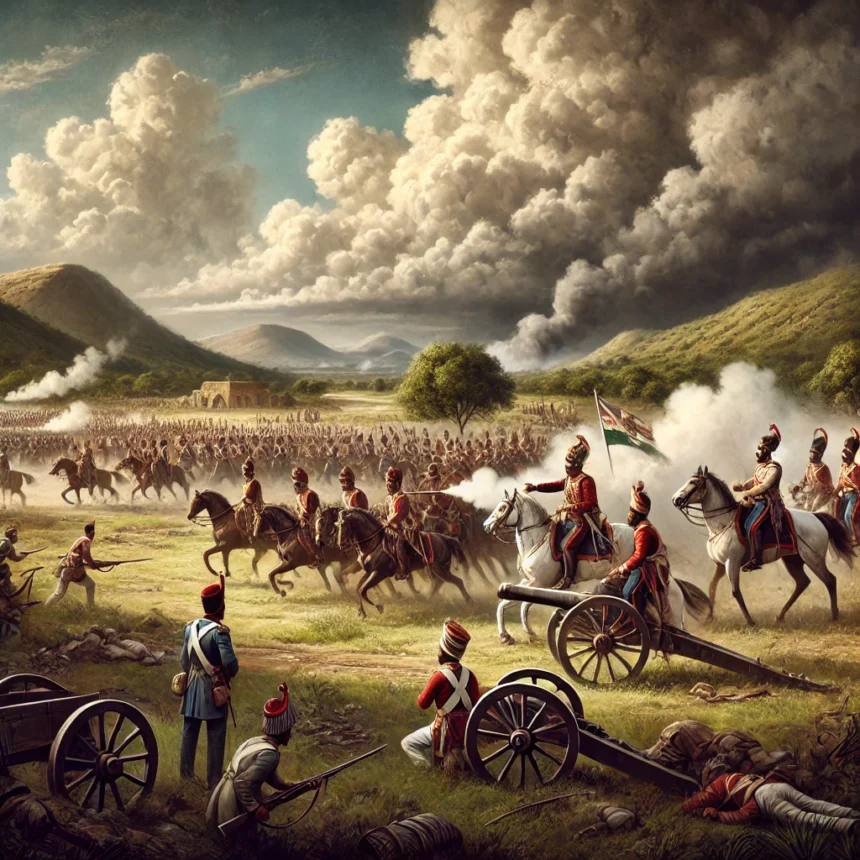Maratha Empire Decline: Consequences of the Third Anglo-Maratha War
Analyzing how Maratha Empire Declined
On December 31, 1818, a significant chapter in Indian history was concluded with the end of the Third Anglo-Maratha War. This conflict not only marked the decline of the once-formidable Maratha Empire but also heralded the rise of British hegemony in India. This blog post explores the strategic and cultural impacts of this pivotal event, shedding light on the transformation of power dynamics and cultural shifts that followed.
The Third Anglo-Maratha War: A Focused Overview
Let us now delve into the backdrop and key moments of the war that reshaped the subcontinent’s political landscape.
The Third Anglo-Maratha War (1817-1818) represented the culmination of escalating tensions between the British East India Company and the Maratha chieftains, driven by British expansionist policies and Maratha resistance to losing sovereignty. This conflict was a pivotal chapter in the British quest to establish dominance over the Indian subcontinent.
Major Engagements

The conflict commenced with significant battles that demonstrated the intensity and desperation of the war. The Battle of Khadki on November 5, 1817, marked the beginning, where despite the Marathas’ brave efforts under Peshwa Baji Rao II, the British’s superior military technology and coordinated strategies prevailed. Other critical engagements included the Siege of Gawilghur and the Battle of Koregaon, which further tilted the balance in favor of the British.
British Strategy and Maratha Response
The British employed a strategic blend of military prowess and diplomatic isolation to weaken the Maratha federation. Leaders such as Major General Sir Thomas Hislop and Mountstuart Elphinstone were instrumental in these efforts, applying both direct combat tactics and negotiating surrenders. The Marathas, fragmented and lacking a cohesive strategy, struggled to counter the British advances, despite their use of traditional guerrilla tactics.
War’s Conclusion
The war officially ended with the Treaty of Mandasor in January 1818. This treaty dethroned Peshwa Baji Rao II, leading to his pensioned exile and marking the disintegration of the Maratha confederacy. The Maratha territories were annexed, significantly expanding British control and diminishing local rule.
Significance
This war decisively ended Maratha attempts to dominate the Indian political scene, paving the way for unchallenged British supremacy. It also marked a significant shift in Indian political dynamics, leading directly to the establishment of the structured governance that characterized the British Raj.
Strategic Impacts of fall of Maratha Empire
Let us now assess how the war consolidated British power and influenced the geopolitical structure of the region.
Consolidation of British Power: The defeat of the Maratha Empire eliminated the last major indigenous challenge to British supremacy in India. With the Marathas subdued, the British East India Company transitioned from a major commercial enterprise to the uncontested political sovereign in India, paving the way for the establishment of the British Raj in 1858.
Territorial Redraw: The British annexation of Maratha territories, particularly the Peshwa’s lands in Pune, significantly altered the political map of India. The doctrine of “paramountcy” was further enforced, allowing the British to control or influence the internal affairs of princely states under the guise of protection.
Military Reorganization: Post-war, the British restructured their military approach in India, establishing a more disciplined and formidable force. This reorganization helped prevent further large-scale uprisings and laid the groundwork for a centralized military administration.
The Rise and Fall of the Maratha Empire
Let us now traverse through the Maratha Empire’s rise to power and the internal challenges that led to its eventual decline.
The Rise: Foundation of Strength and Unity
The ascent of the Maratha Empire in the mid-17th century under Shivaji Maharaj is a testament to strong leadership and strategic unity. Shivaji’s exceptional command and the establishment of a robust administrative structure enabled the Marathas to expand their influence and challenge the dominant Mughal power. This period was characterized by a cohesive leadership that effectively utilized guerrilla warfare and formed a decentralized yet coordinated system of governance through the appointment of competent regional chieftains, known as ‘sardars’.
The Fall: Crumbling from Within
Contrasting sharply with its rise, the decline of the Maratha Empire was marked significantly by internal disunity and leadership vacuums. Post-Shivaji, the empire struggled with succession disputes and the erosion of central authority, which were exacerbated by the deaths of strong leaders like Madhavrao I. This lack of a unified command structure led to fragmented responses to external threats, particularly from the British. The internal strife not only weakened military cohesion but also made diplomatic maneuvers difficult, leaving the empire vulnerable to division and defeat.
By concentrating on the dichotomy between the strong unified leadership during its rise and the fragmented leadership during its decline, this section avoids redundancy and provides a clear narrative arc that links directly to the empire’s eventual fall. This approach emphasizes the critical role leadership and internal unity played in both the rise and the demise of the Maratha Empire.
The Root Causes of the Maratha Empire Decline
We now explore the underlying factors that contributed to the downfall of the Maratha Empire, from internal disunity to external pressures.
Internal Disunity and Leadership Crises
One of the primary reasons for the decline of the Maratha Empire was its inherent structural weaknesses and internal disunity. The Maratha confederacy was a coalition of several chieftains who were often at odds with each other. This lack of a cohesive political unity and centralized governance made it difficult to mount a unified defense against external threats. The empire’s leadership was also plagued by succession disputes and power struggles, particularly after the death of its prominent leaders like Madhavrao I. These leadership crises led to fragmented command and weakened their strategic responses during crucial conflicts.
External Military Pressures
Externally, the continuous military engagements with the Mughal Empire, and later with the British East India Company, drained the Maratha resources and military strength. Each Anglo-Maratha War saw the Marathas losing grip over their territories and influence. The British, with their superior military technology, disciplined army, and strategic alliances, were able to exploit the vulnerabilities of the Maratha federation. Moreover, the British diplomatic strategies of forging alliances with rival princely states and exploiting the internal dissent within the Marathas further exacerbated their decline.
Economic Strain
The Maratha Empire’s economic base was heavily reliant on tribute and plunder from conquests. As the opportunities for expansion dwindled due to the strengthening of other regional powers and the arrival of the British, the economic stability of the empire was threatened. This reliance on a war economy without developing a sustainable economic model in times of peace contributed significantly to their vulnerability in prolonged conflicts. The administrative structure, though innovative, failed to evolve to meet the needs of a changing political landscape, leading to inefficiencies and corruption.
Cultural and Social Rigidity
Culturally, the Marathas were staunch upholders of Hindu traditions and values, which often led to social rigidity and resistance to change. This cultural conservatism impacted their ability to modernize their military and administrative frameworks in response to the changing dynamics of the 18th century. As the British introduced new administrative practices and social reforms, the Marathas’ traditional systems began to appear outdated and less effective, alienating some sections of society and diminishing their support base.
Summary
The decline of the Maratha Empire was not due to a single catastrophic event but a combination of internal weaknesses, external military pressures, economic challenges, and cultural rigidity. These factors collectively undermined the empire’s ability to maintain its sovereignty against the rising power of the British, leading to its eventual subjugation and the reconfiguration of power in the Indian subcontinent. Understanding these root causes provides insight into the complexities of empire dynamics and the transitions of power in historical contexts.
Cultural Impacts of Maratha Empire Decline
In a culturally diverse country we now consider the profound cultural shifts and resistance that emerged in response to the changing power dynamics.
Cultural Assimilation and Resistance: The imposition of British cultural norms began in earnest after the Maratha defeat. English education, Western legal systems, and Christian missionary activities increased, aiming to reshape Indian society. However, this also sparked a sense of cultural reawakening among Indians, leading to a resurgence in traditional arts, education, and religion as forms of resistance.
Economic Transformation: The war disrupted the traditional Maratha agrarian economy, leading to the imposition of British economic policies. Land revenue systems like the Ryotwari and Mahalwari were introduced, fundamentally altering the rural economic landscape and paving the way for commercial agriculture oriented towards British interests.
Social Reorganization: The decline of the Marathas affected the social structure of their former territories. The British policies of “divide and rule” fostered communal divisions and redefined social relationships. The promotion of certain classes and castes over others led to a reorganization of the social hierarchy, which had long-term implications for Indian society.
Reflections on Maratha Empire Decline
The end of the Third Anglo-Maratha War on December 31, 1818, was not just a military defeat for the Marathas but a transformative event that reshaped India’s strategic, cultural, and social contours. As the British solidified their control, India embarked on a new path, leading to both challenges and the eventual emergence of a modern nation-state. This period, thus, serves as a crucial point of reference for understanding the complexities of colonial rule and the indomitable spirit of resistance among the Indian populace.
Feature Image: Click here to view the image.
Top Searched #Tags #MarathaEmpire #ThirdAngloMarathaWar #BritishRaj #IndianHistory #ColonialIndia
Visit our Youtube Channel by clicking here.
Click here to visit the related page on Medium.com



Leave a Reply